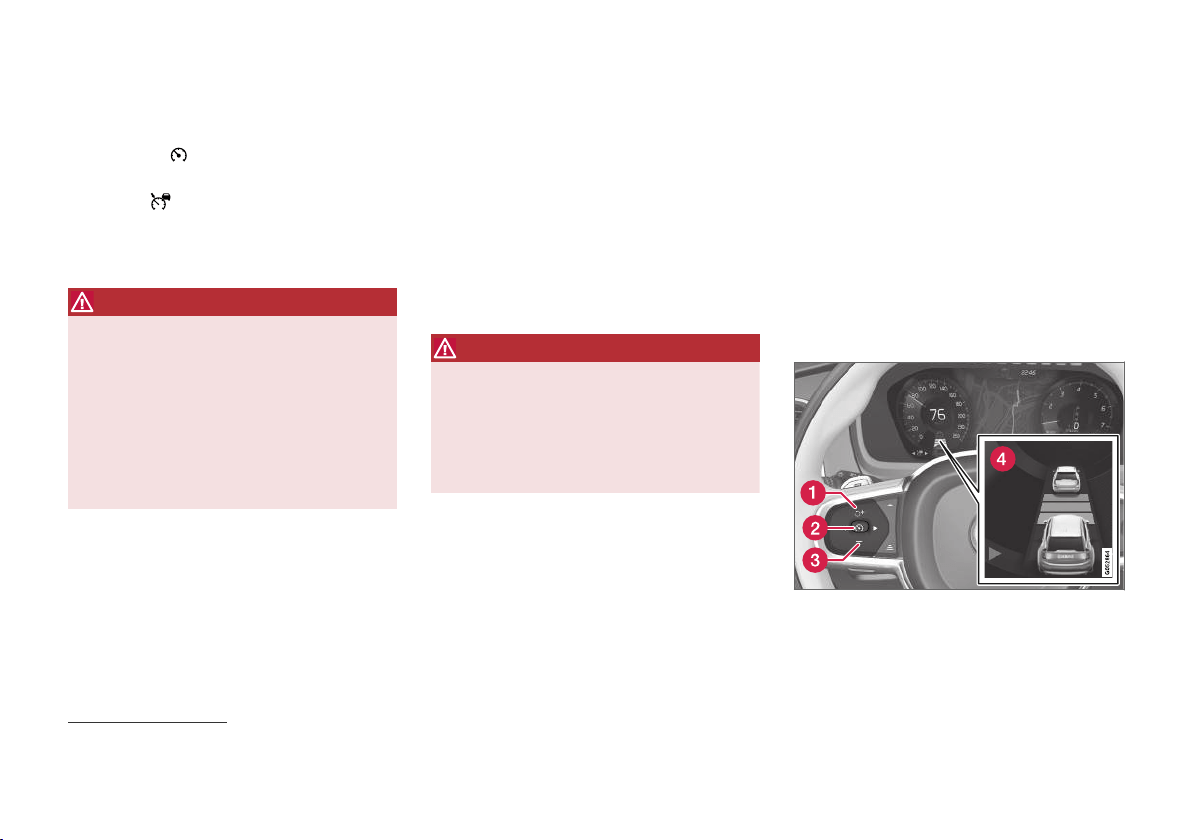Loading ...
Loading ...
Loading ...

DRIVER SUPPORT
}}
311
To temporarily deactivate Adaptive Cruise Control
and put it in standby mode:
–
Press the button on the steering wheel
(2).
>
The
symbol in the instrument panel
changes color from WHITE to GRAY and
the set speed in the center of the speed-
ometer will change from BEIGE to GRAY.
WARNING
•
If Adaptive Cruise Control is in standby
mode, the driver must intervene and regu-
late both speed and distance to the vehicle
ahead.
•
If the vehicle comes too close to a vehicle
ahead when Adaptive Cruise Control is in
standby mode, the driver is instead warned
of the short distance by the Distance Alert
function.
Standby mode due to action by the driver
Adaptive Cruise Control will be temporarily deac-
tivated and put in standby mode if:
•
the brakes are applied
•
the gear selector is moved to N
•
the vehicle is driven faster than the set
speed for more than 1 minute
Temporarily increasing speed using the accelera-
tor pedal, e.g. when passing another vehicle, will
not affect the setting. The vehicle will return to
the set speed when the accelerator pedal is
released.
Automatic standby mode
Adaptive Cruise Control is dependent on other
systems, such as Electronic Stability Control
(ESC
47
). If any of these other systems stops
working, Adaptive Cruise Control will automati-
cally switch off.
WARNING
With automatic standby mode, the driver is
warned by an acoustic signal and a message
on the instrument panel.
•
The driver must then regulate vehicle
speed, apply the brakes if necessary, and
maintain a safe distance to other vehicles.
Adaptive Cruise Control may go into standby
mode if:
•
your vehicle's speed goes below 5 km/h
(3 mph) and ACC cannot determine if the
vehicle ahead is stationary or if it is another
object, e.g. a speed bump.
•
your vehicle's speed goes under 5 km/h
(3 mph) and the vehicle ahead turns so that
ACC no longer has a vehicle to follow.
•
the driver opens the door.
•
the driver unbuckles the seat belt.
•
the engine speed (rpm) is too low/high.
•
one or more of the wheels lose traction.
•
the brake temperature is high.
•
the parking brake is applied.
•
the camera/radar sensor is covered by snow
or heavy rain (the camera lens/radar waves
are blocked)
Reactivating Adaptive Cruise Control
from standby mode
Note: This illustration is general and details may vary
depending on model.
47
Electronic Stability Control
Loading ...
Loading ...
Loading ...